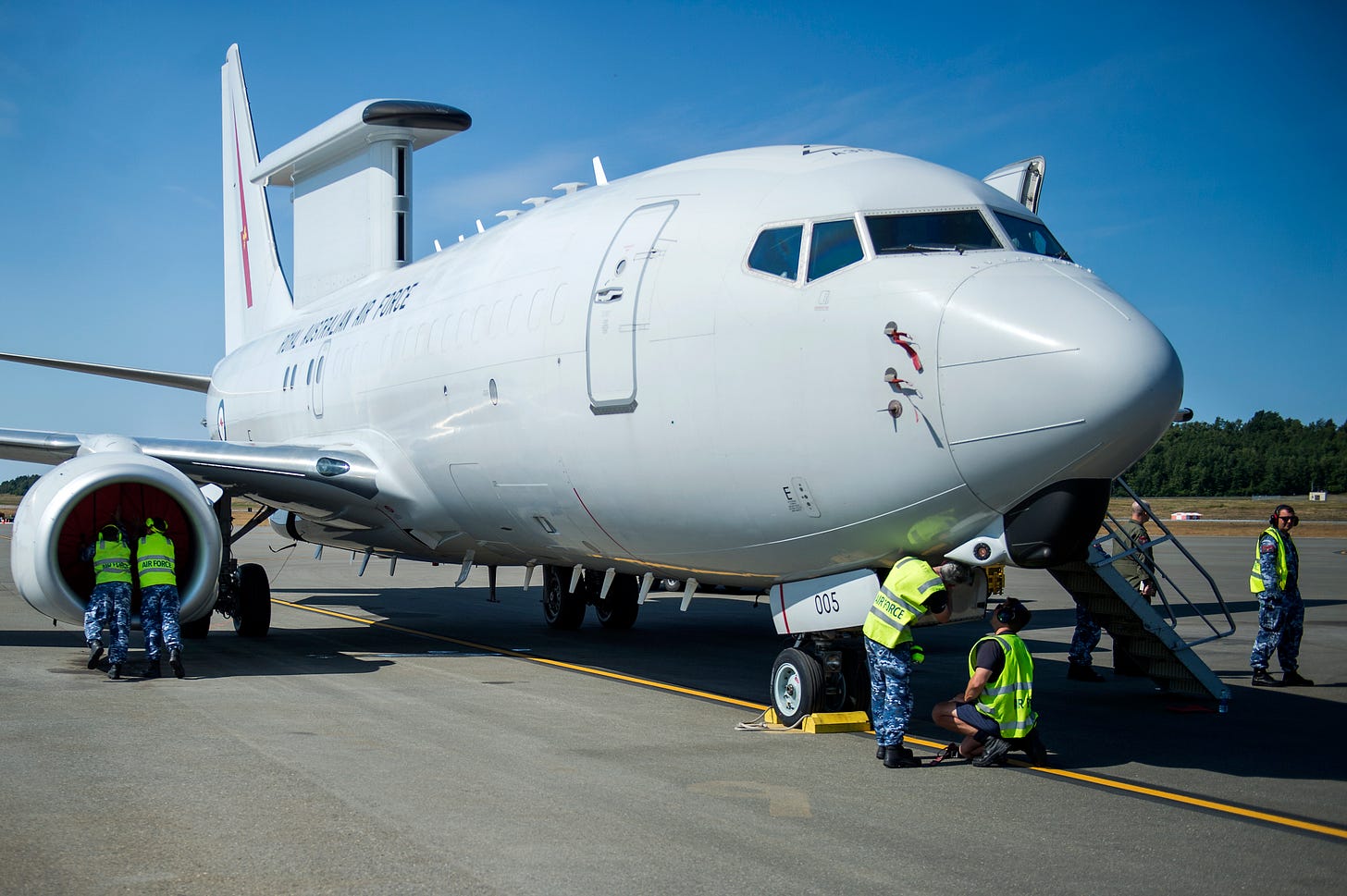Australia’s E-7 Wedgetail AWACS is the Future of Airborne Command and Control
And the Aussie's lent one to Ukraine last year.

When I served in the US Air Force, my job was to maintain the radar system of the E-3 Sentry AWACS – America’s premiere airborne warning and control platform.
After electronics school at Keesler AFB in Biloxi, Mississippi, I then shipped off to learn all about the E-3 at Sheppard AFB in Wichita Falls, Texas – which, by the way, also happens to be the most austere and depressing US Air Force base in the country…
Yes, even more than Minot AFB in North Dakota because at least at Minot, you could end all of civilization if you’re really bored. (They have nukes at Minot).
So, imagine my surprise when I finally got my hands on an E-3 Sentry at Tinker AFB in Oklahoma, only to discover that the most technologically advanced air force on Earth was using vacuum tubes and 1970s technology that was far older than I was.
Seriously, the E-3 is built on top of a Boeing 707.
Do you know what else was built on a Boeing 707? President John F. Kennedy’s Air Force One when he flew into Dallas in 1963.
My point is, it’s old as far as airframes go… And well past due for an upgrade.
This is why I was quite surprised to learn that the Royal Australian Air Force has been flying circles around the US for nearly 15 years – at least when it comes to AWACS.
Note: I will use the term AWACS (Airborne Warning and Control System) interchangeably to refer to either the E-7A Wedgetail or the E-3 Sentry.
Australia’s E-7A Wedgetail is a monumental upgrade to what the US is flying, and the Aussies have been flying it since 2010.
In fact, Australia even lent one to Ukraine early last year.
In late 2023 to mid-2024, the Royal Australian Air Force deployed an E-7A Wedgetail AWACS platform to Germany to assist Ukraine with tracking incoming Russian threats.
Keep reading with a 7-day free trial
Subscribe to Eyes Only with Wes O'Donnell to keep reading this post and get 7 days of free access to the full post archives.


